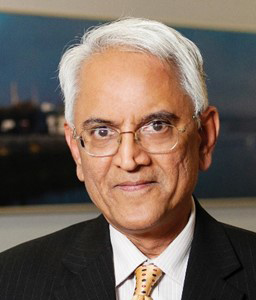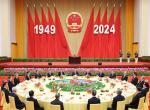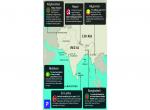The frenetic bilateral exchanges of recent months have imparted a new stimulus to the India-US relationship, somewhat similar to that imparted by the nuclear deal of 2008. These giant strides stem from a convergence of strategic interests. But the obvious asymmetry of power, capacity and interests prevents a total congruence of perspectives.
An Indian Prime Minister’s visit to the United States generates anticipation, excitement and saturation coverage in Indian media and political circles. It does not usually attract much attention in the US, beyond a few paras in the inside pages of its print media.
Prime Minister Narendra Modi’s visit is breaking out of this template. It is an “official State visit” – only the third by an Indian leader since our Independence. He will address a joint session of the US Congress – one of few world leaders to do so twice. Other courtesies will be extended, beyond the requirements of protocol.
Modi’s visit will cap a sequence of prolific bilateral exchanges in recent months. The visits to India of the US Treasury, Commerce and Defence Secretaries have been interspersed with those of equally senior Indian ministers in the other direction. The White House described Modi’s visit as “historic”. Defence Secretary Lloyd Austin talked of a “transformative moment” in the relationship. National Security Advisor Jake Sullivan has described bilateral relations in euphoric terms.
A Widening, Deepening Partnership
The frenetic activity of recent months has imparted a new stimulus to the bilateral relationship, somewhat similar to that imparted by the India-US nuclear deal of 2008. The US is now India’s largest trade partner. A host of business and technology connections have powered investments in both directions.
US defence sales to India have surged. Security cooperation, including intelligence sharing, strengthens India’s defence of its borders. The elevation of the Quad (India, Australia, Japan and USA) dialogue to summit level has reinforced India’s bilateral and plurilateral initiatives in the Indo-Pacific. The two countries have worked to synchronise their approaches in India’s neighbourhood, though there remain some wrinkles that may need to be ironed out during Modi’s discussions in Washington.
The technology cooperation has been energised by an initiative for Critical and Emerging Technologies (iCET), led by the two National Security Advisors, inviting industry and research institutions to strategize with the governments on reinforcing partnerships in areas like artificial intelligence, quantum technologies, 5G/6G communications and semiconductor design and manufacturing.
The China Factor
Negotiations for development and manufacture of advanced jet engines in India may be progressed during the visit. Their success would depend on US permissions for sharing key technologies and Indian willingness to make it commercially worthwhile for the US entities involved in the project.
There are a number of other proposals for India to acquire sophisticated weaponry, including armed drones. India’s diversification of defence purchases needs access to high-quality weapons systems, with assured access to repair, maintenance and operations facilities.
The Russia-Ukraine war, escalating US-China tensions and deteriorating India-China relations form the backdrop to this new energy in India-US relations. Anticipation of a slackening of Russian defence supplies spurred US offers of faster technology transfers. India grasped the opportunity of cutting-edge arms transfers to reinforce its defence against potential adversaries.
Western concerns about supply chain resilience resonated with those of India, which sought to be part of the new supply chain loops. Declared intentions for de-risking from China and friend-shoring promise opportunities for India, if it can suitably tweak its investment regime.
Temper Unrealistic Expectations
US media, academia and political circles have criticised India for not joining in the condemnation of Russia. The Biden Administration has shown the maturity to recognise India’s geopolitical perspectives and to focus instead on the big picture of strategic opportunities.
Some in the US attribute the effusive courting of Modi at least partially to the electoral importance of the Indian American community. Numbering about five million, it is spread in significant numbers across swing states (Pennsylvania, Georgia and Michigan), where a few percentage points could turn a Presidential election. Most Indian Americans supported Biden in 2020; many admire India’s growth under Modi.
Given the nature of US democracy, there will inevitably be sniping from sections of its society about India’s unhelpful position on Ukraine, its democratic “backsliding” and its human rights record. Two recent Congressional Research Service reports on India are examples; one of them hints at an unhappiness in the State Department about the “kid-glove” treatment of India.
The giant strides in India-US relations stem from a convergence of strategic interests. But the obvious asymmetry of power, capacity and interests prevents a total congruence of perspectives. One is a superpower with global political leverage and military reach and, consequently, a clutch of interests across issues and geographies.
The other is expanding its international profile, but also grappling with major domestic challenges and security issues in its immediate periphery. A mature understanding of this asymmetry should temper unrealistic mutual expectations from the relationship.











Post new comment